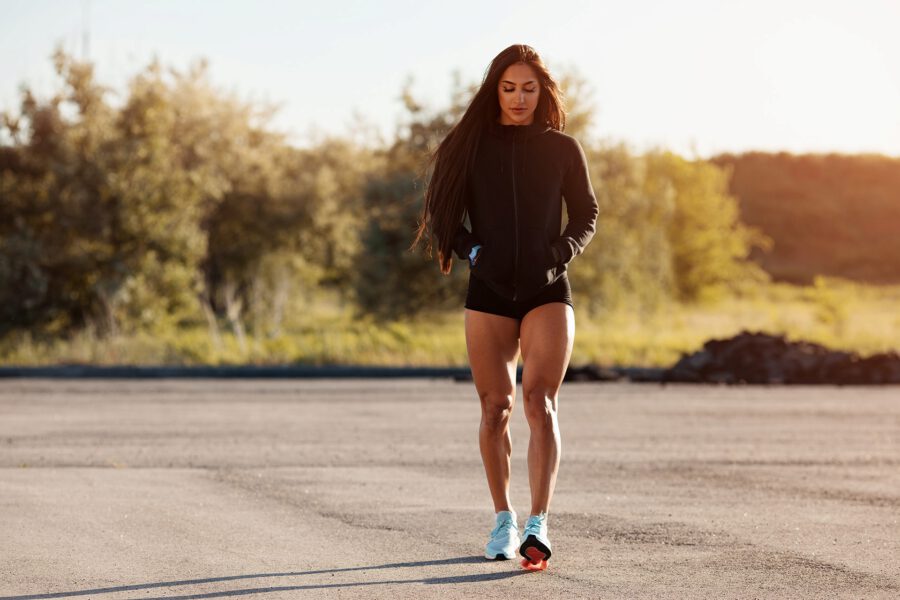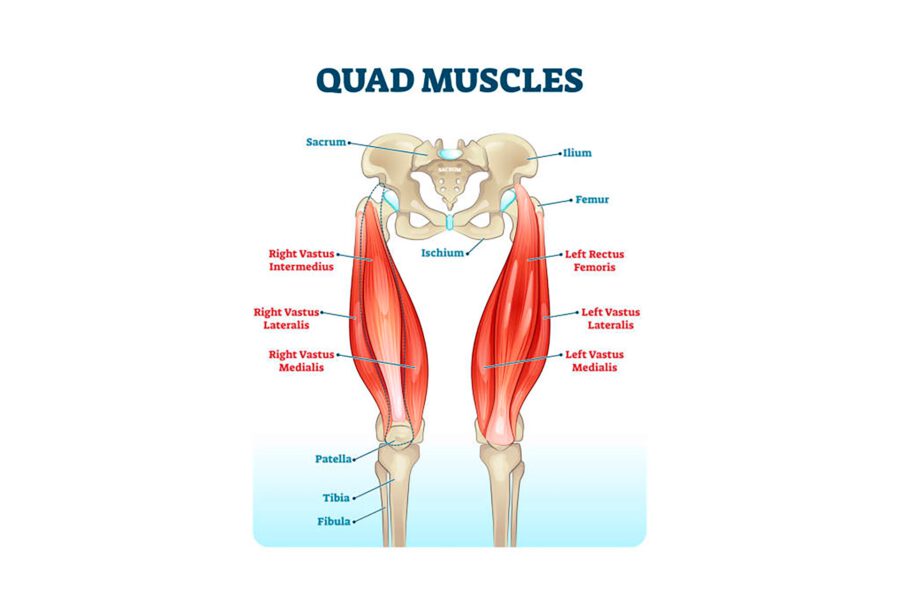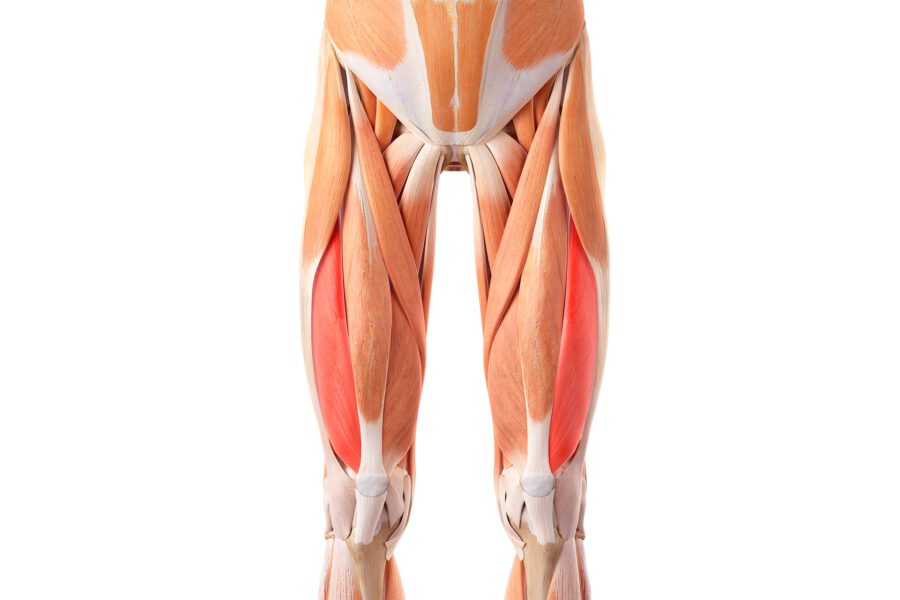4 Best and Worst Quadriceps Exercises To Build Strong Legs
Thick thighs don’t lie. Well-developed quadriceps or quads are a product of hard work, whether through structured gym workouts or a lifestyle revolving around physical activities. Nowadays, people, especially women, work on their quadriceps for aesthetic reasons.
Beyond its physical appeal, the quads play a crucial role in lower body strength and power generation. This is because functional heavy lifting relies more on leg muscle strength than your back muscles.
Almost all physical sports require sufficient leg power and endurance to perform at optimal levels. Skills like sprinting, agility, quick direction changes, powerful kicks, and explosive lifting movements need strong quadriceps.
This article will discuss the best and the worst quad exercises to help you optimize your training and develop strong leg muscles.
The quads are a group of four muscles: Vastus Medialis, Vastus Intermedius, Vastus Lateralis, and Rectus Femoris.
These muscles that form the bulk of the front thigh and are considered the most powerful muscle groups in your body. Together these muscles are responsible for extending the knee and stabilizing the joint during different activities.
One of the key aesthetic goals for many people is achieving clear muscle definition and separation within the quadriceps. This means being able to distinctly see the four muscles that make up the quads, particularly the rectus femoris and the vastus medialis, which form the iconic "teardrop" shape just above the knee.
Beyond athletics, a strong quadriceps contribute significantly to longevity and quality of life as we age. Studies have shown that our ability to maintain our mobility is directly correlated to our health span. Quadriceps strength helps maintain balance, support joint health, and enable independence in daily activities. Strong quads can be a key factor in preventing falls and maintaining mobility in older adults.
Moreover, the quadriceps play a vital role in metabolic health. As one of the largest muscle groups in the body, they're a major player in overall metabolism. Building and maintaining quad strength can contribute to improved insulin sensitivity, better body composition, and enhanced overall metabolic function.
We’ve chosen the best exercises based on their ability to effectively engage the muscle groups, maximize the range of motion, and provide the potential for progressive overload. Note that all quad exercises activate the entirety of the muscle group to some degree.
The vastus medialis forms the inner part of the thigh. It resembles a teardrop shape just above the knee, which is particularly visible when the muscle is well-developed. Its main role is to extend the knee and stabilize the knee cap during activities like walking, running and squatting.
Weakness of vastus medialis can lead to dysfunctional tracking of the knee cap causing increased risk of injuries and knee pain.
While sissy squat is great for improving tendon strength in the knee joint, it often fails to create the kind of muscle bulk or hypertrophy you’re looking for in the inner thigh, making this exercise both functionally and aesthetically inferior to other squat exercises.
Moreover, the risk of knee strain or injury is higher, particularly for those with weak or compromised knee joints, making it a less effective choice for hypertrophy-focused training.
By narrowing your stance during a squat, you shift more emphasis on the inner thigh, which directly engages the vastus medialis. This exercise not only promotes hypertrophy in this muscle but also enhances overall leg strength and stability.
This movement mimics natural functional patterns and engages multiple muscle groups, making it superior for both muscle growth and functional strength in the vastus medialis.
Other great exercises for the Vastus medialis:
Vastus intermedius runs down in the middle of the thigh. It is often called the shy muscle because it’s not visible from the surface and is rarely discussed in general fitness circles.
Unlike the other three quadriceps muscles, the vastus intermedius doesn't attach to the hip bone. Instead, it originates on the front and lateral surfaces of the femur shaft. This unique attachment allows it to generate force purely for knee extension without any influence from hip movements, making it a critical stabilizer during activities that require precise knee control.
Jump squats are good for building leg power and preparing the lower body for explosive movements. However, jump squats quickly drains your stamina and can be hard to overload.
The unstable surface of the Bosu ball limits the amount of weight you can safely lift, which in turn reduces the overall stimulus necessary for muscle growth. For those specifically looking to build size and strength in the vastus intermedius, traditional exercises with stable footing and heavier loads are typically more effective.
However, Bosu ball squats do offer unique benefits, particularly in improving knee stabilization and proprioception. The instability of the Bosu ball forces your body to engage smaller stabilizing muscles around the knee, including the vastus intermedius, to maintain balance.
This can be particularly beneficial for athletes in sports that require a high degree of balance and coordination, such as skiing, soccer, or basketball.
Other great exercises for the vastus intermedius:
Vastus lateralis is the largest and most outer part of the quads. It runs from the outer side of the thigh bone to the top of the knee cap. Contrary to vastus intermedius, vastus lateralis is the most visible of the quadricep muscle group, contributing significantly to the contour and overall shape of the thigh.
The muscle fibers of vastus lateralis are arranged at an angle that is inline with its action. Meaning, its innate structure allows it to generate more force than a muscle of similar size.
While lunges are a versatile and effective lower-body exercise, they are not the best choice for specifically targeting the vastus lateralis. Although lunges do engage the lateral quads to some extent, they also focus on the glutes and hamstrings, especially in variations that emphasize hip extension.
The forward motion and depth of a typical lunge shift much of the load to the glutes, making it more of a posterior chain exercise.
Barbell front squats have all the benefits of barbell back squats except it is much better at putting more tension to the quads. During the barbell front squat, your center of mass is shifted forward forcing you to keep an upright posture during the movement.
This whole motion increases the moment arm to the knee joint, creating more tension to the quads and provides more stimulus for muscle growth.
Other great exercises for vastus lateralis:
The rectus femoris is the only quad muscle that crosses both the hip and knee joints. This strap-like muscle runs down the front of the thigh from the pelvis to the knee cap.
Since it acts on two joints, it allows bending of the hip while also contributing to knee extension, making it crucial in movements that combine these actions, such as kicking a ball or jumping. If you are an athlete, it’s essential to build foundation strength and flexibility of the rectus femoris since it is one of the most commonly injured muscles.
Deadlifts activate the quads but not as effective as squat exercises. Deadlifts are more posterior chain focused and engage the glutes more than the quads.
Seated leg extension exercises allow significant hypertrophy of the rectus femoris since it fixes the hip joint and puts the muscle in a stretch position during the movement.
It engages all the four heads of the quads while creating tons of stimulus for muscle growth of the rectus femoris. In addition, it can easily be overloaded and can be done unilaterally to add more challenge. Just remember to sit further back to stretch the quads.
Other great exercises for the rectus femoris
- Hack squat
- Low-bar back squat
- Goblet squat
- Bulgarian split squat
Here’s a plan for women that will help you build a strong body:
And for men:
Strong quads are the foundation for explosive speed, jumping ability, and overall athletic prowess. They're crucial for maintaining proper knee alignment, reducing injury risk, and supporting daily activities from climbing stairs to standing up from a chair.
In sports, well-developed quads can be the difference between average and elite performance. They provide the driving force for sprinters exploding out of the blocks, basketball players soaring for a dunk, or soccer players unleashing a powerful shot. For strength athletes, quad strength is often the limiting factor in squat and leg press numbers.





